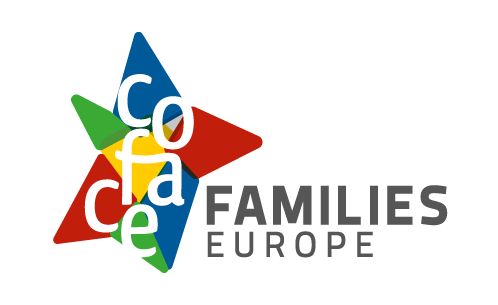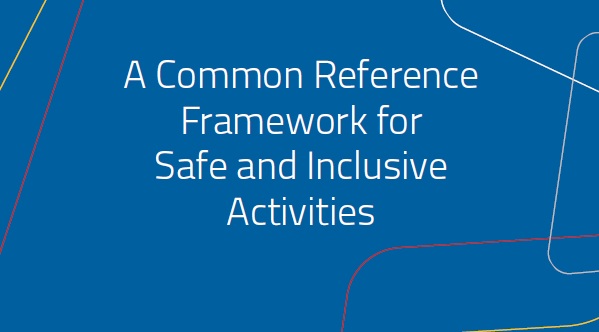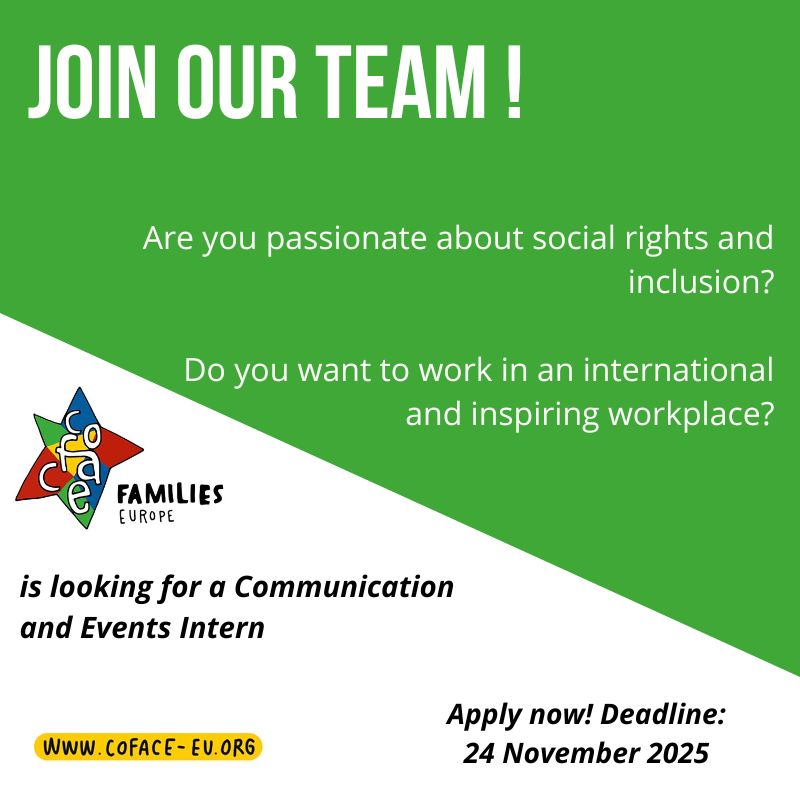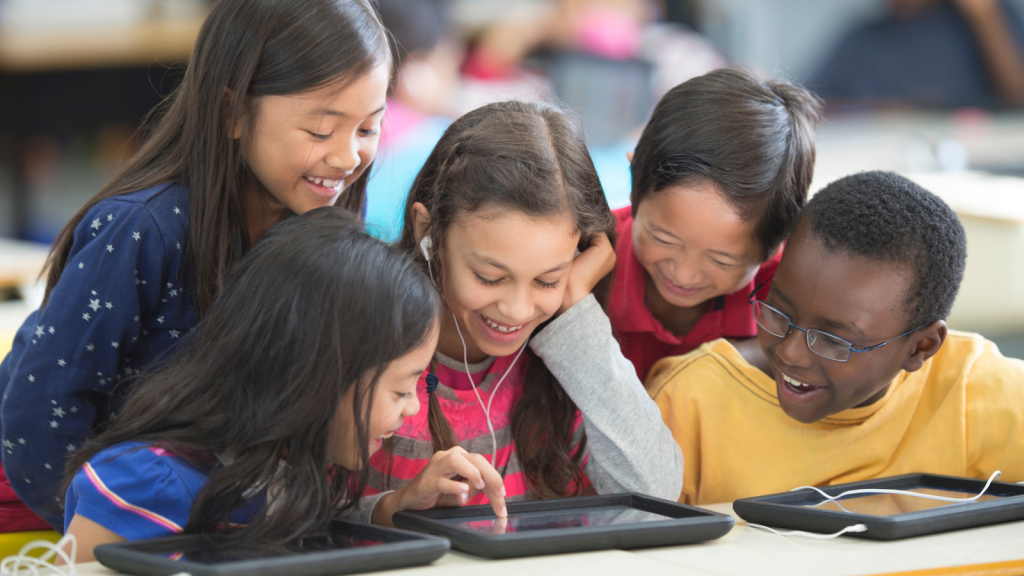A text or image has the power to shape our understanding of the world. We hear ‘astronaut’ and think of a man in a white space suit; we read ‘flight attendant’ and envisage a tall, female person; we talk about a family and imagine a white, able-bodied, fit, heterosexual couple with children. Why? Because this is what we constantly see and hear around us. This environment creates our biases, but it is far from a correct representation of the diversity in our societies. Bringing more diverse representation into our language and imagery is vital to catch up with reality and change attitudes.
Working in communications for an organization on family issues has taught me two things. Firstly, that many believe that family policies are only a conservative topic, which makes it constantly necessary in an introduction to add that all types of families without discrimination are represented. Secondly, visually showing the diversity of families takes efforts.
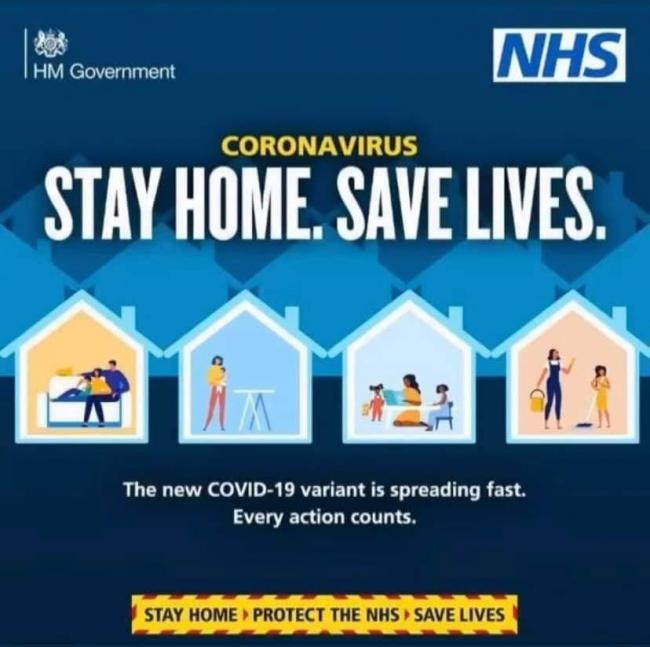 Photos one can find online barely represent the whole range of diversity, diverse constellations and attitudes of families. Instead of countering this under-representation, we still see too much communication around us reaffirming only traditional settings and stereotypes. A recent “Stay-at-home” ad around Covid-19 in the UK showed a woman as caretaker at home, doing all the housework. The man only appeared once in the image when he was sitting on a sofa. The ad was later taken down after harsh criticism. However, one might wonder, how many eyes the ad had to go through before publication and how many missed this outdated prescription. Search engines or stock image providers are also lacking diversity in their images which makes it that much harder when one is on a quest to visualize diversity in race/ethnicity, body-shapes, abilities, gender, and age. It is even harder to find a way to show poverty, abuse, vulnerability or anything not traditional. However, showing these circumstances is vital to avoid stigmatization and taboos.
Photos one can find online barely represent the whole range of diversity, diverse constellations and attitudes of families. Instead of countering this under-representation, we still see too much communication around us reaffirming only traditional settings and stereotypes. A recent “Stay-at-home” ad around Covid-19 in the UK showed a woman as caretaker at home, doing all the housework. The man only appeared once in the image when he was sitting on a sofa. The ad was later taken down after harsh criticism. However, one might wonder, how many eyes the ad had to go through before publication and how many missed this outdated prescription. Search engines or stock image providers are also lacking diversity in their images which makes it that much harder when one is on a quest to visualize diversity in race/ethnicity, body-shapes, abilities, gender, and age. It is even harder to find a way to show poverty, abuse, vulnerability or anything not traditional. However, showing these circumstances is vital to avoid stigmatization and taboos.
Societal diversity should not only be transmitted through visual materials but also through language as language similarly forms our image of society. In media and communication, a correct and sensitive language is important. Often ‘femicides’ are simplified as ‘family drama’. Violence against women is often hidden or rephrased to gain as many readers and clicks. This can have dire consequences, especially for the women involved when there is an underlying blame as we see in headline such as “French police investigates attack on woman, 22, for wearing skirt.” Sensitive reporting should be the norm and be sacrificed for clickbait.
Language and images make reality, therefore one has to be mindful of the words and visuals used. How to address subjects is important to be inclusive and representative of our whole society. A general recommendation is not to promote stereotypes in any way and name parts and circumstances properly to avoid any connotations. An example is to always use the term Female Genital Mutilation instead of “circumcision” or “infibulation”. Using correct words shapes meaning. But language itself could be inclusive as well.
English is a language in which personal names are grammatically neutral, so we can use them to refer to people without having to commit to a gender. French and German are more difficult in this regard as they use the masculine genus to refer to both women and men in plural. Many argue that this linguistically depicts the social subordination of women and reaffirms it again and again.
Nowadays, both languages are undergoing a change as more and more people request gender-sensitive or gender-neutral language. Although some linguistics (correctly) argue that the masculine genus is inherently neutral and thus automatically includes women, studies have shown that the masculine genus mainly evokes male images, making the male the norm. One could even reason that it keeps erasing women (and other genders) from being represented or left in certain corners of society – what we can see with terms such as ‘midwife’. Change is slow and resistance is tenacious, but we are already experiencing a slow change, such as from “policeman” to “police officer” and hopefully someday from “housewife” to “house-spouse”?
Talking about diversity in communication might seem minor. We have all heard the phrase “It goes without saying’ that everyone is included”. But our communication is only one of many small gendered items we are currently surrounded with. It is especially hard for children whom we want to teach about equality, but create a world where they are permanently confronted with divisions. Toy shops have too often a girl and a boy section. Schools are establishing institutions for children with disabilities instead of practicing inclusion.
“These initial divisions may seem innocent, but over time our gendered worlds have lasting effects on how children grow up to understand themselves and the choices they make – as well as how to behave in the society they inhabit.” says Melissa Hogenboom. Indeed, by bringing diversity into both imagery and language (it goes without saying that both have to go hand in hand), we can bring diversity into our biases until there are turned upside down over and over again.
**DISCLAIMER: All opinions in this article reflect the views of the author, not of COFACE Families Europe**
About the author:
Isabell Wutz was Communication officer of COFACE from 2018 to 2021. She has also explored the marketing world as well as journalism with her involvement as editor for the Europe & Me magazine. She is now Communications officer for ECDPM (Think Tank).

